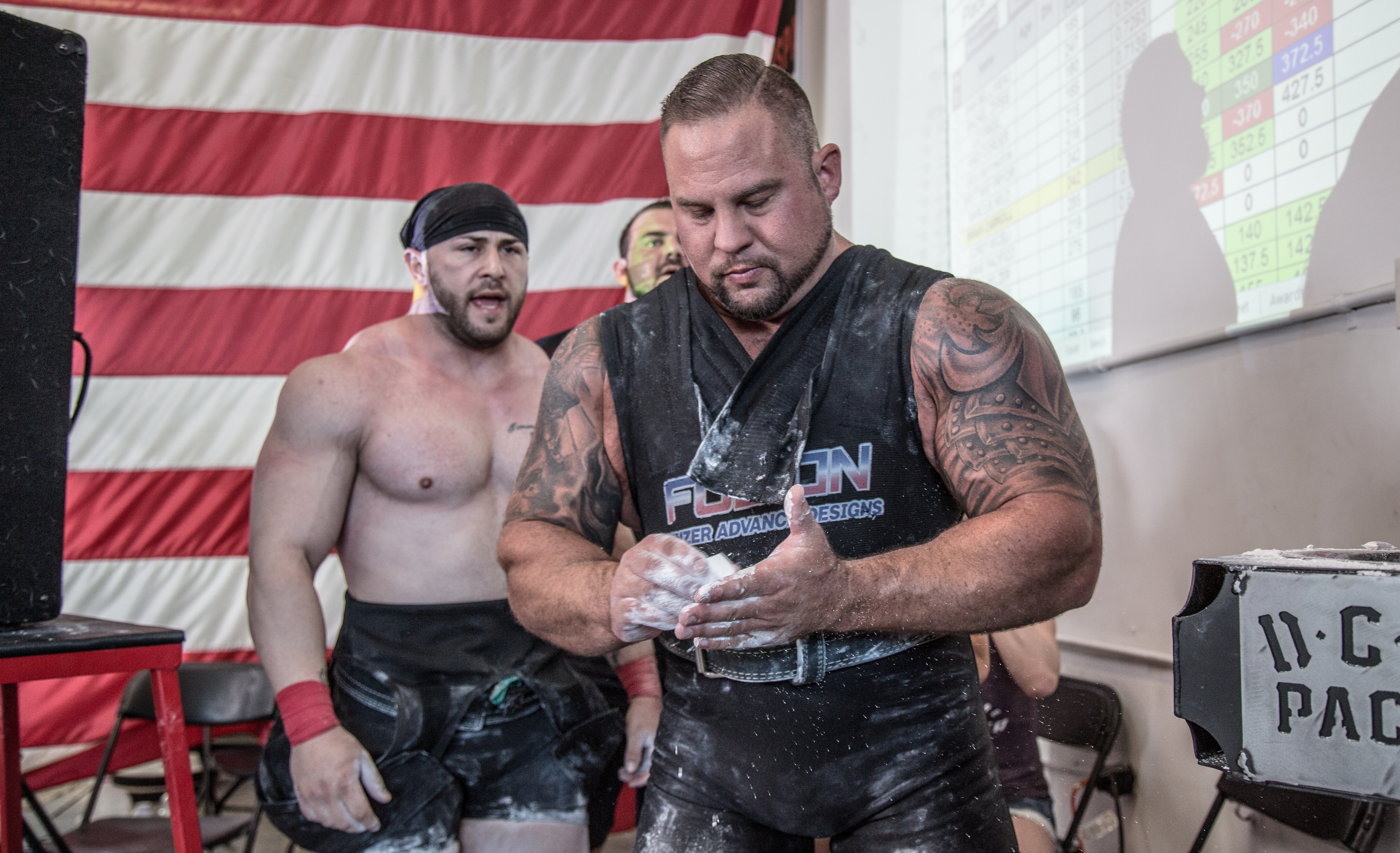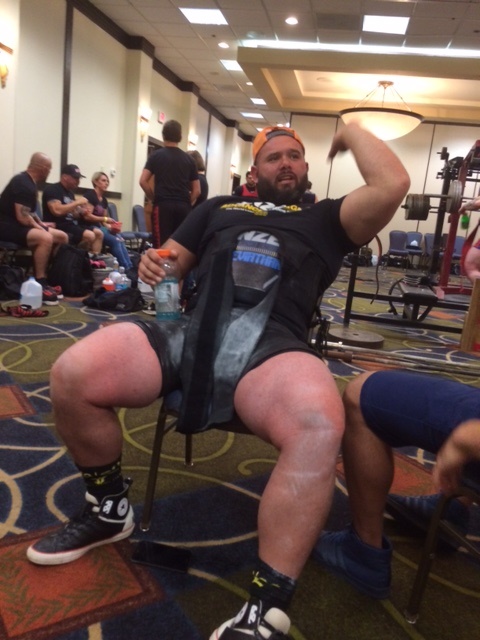
09 Oct Equipped Myths
By: Daniel Dalenberg
My first meet was in 2004. I lifted raw in a puny weight class as a 15-year-old kid. When I first started out, everyone wore gear. In the first few years, I was often times one of only a couple raw lifters in the meet. That started to change pretty dramatically about halfway through my competitive career; with more and more lifters going raw for a variety of reason. Over the course of that time, especially during some of the more transitional years, it has been interesting to say the least to watch and read raw vs. gear debates. Much of which was (and still is) fueled by unfounded and untrue opinions, flat out myths.
[wa-wps]
Just Put it on and Go!
“If I wore 4 plies of gear I would squat 1000 too.”
This attitude implies that equipment is as simple as buying suit that fits right, putting it on and doing a meet. If only it was that easy!
I’ve squatted 800+ in wraps only on multiple occasions. I’m built to squat, with short femurs, compact structure and a thick midsection. When I squat in my equipped stance my overall range of motion is extremely short and I stay almost completely upright. All of the right ingredients to squat something enormous in gear.
15 weeks in and I hadn’t squatted anything heavier than what I had done in only wraps. Based on my strength and build, a 1000-pound squat should have come easy right? At the time of writing this article, I am 4 weeks out from my first multi-ply meet in 6 years and just this week I squatted 900. Not a bad spot to be in at all, but shouldn’t I be farther along? Why am I not squatting 1000+?
- Margin for error is so tiny in gear. The more extreme the gear, the smaller the margin. It took several sessions just to figure out how to unrack the squat bar. I struggled to take 705 out of the rack one week. It takes a long time to get all the details perfect.
- New weaknesses are being exposed. Now I have to be strong in different ways. Little stabilizing muscles in my back and hips are being stressed much further now. The limiting factors are completely different in gear and I have never trained many of these muscles so directly.
- It simply takes time to get used to the loads. 900 pounds feels like an entire planet and the body is screaming “ABORT” while you are coming down. That’s a bit of a mind trick the first time around.
To sum it up- almost no one will just throw on gear, train for a few weeks, and put up a huge total.
Gear does all the work
“Equipped lifters are weak. RAW is the true show of strength. The gear is doing all the work.”
First- the true showing of strength? Shut up. This is dumb. This idea is ridiculous. It is a showing of strength in a very specific area; the squat, bench press and deadlift while lifting in a minimally equipped manner.
On to the main point…
Equipped lifting requires a great deal of strength, often in a different manner than raw lifting. To reiterate from above: The margin of error is very small. As a result, the equipped lifter must demonstrate extreme control over the barbell to keep it in the correct path and properly utilize the gear that they are wearing. While the gear is assistive, massive strength is required to stay in the groove, reverse the weight and keep it moving through lock out.
Here’s a great example of Brian showing some serious raw strength.
500×3 raw close grip bench to go along with his 800+ multi-ply bench. Not bad for a guy whose shirt does the work.
Admittedly, the strength is definitely different. I know that right now my raw bench isn’t at peak performance. I haven’t trained much off the chest for some time and for good reason, the need just isn’t there. It is more important that I build the upper portion of the lift as this is where an equipped bench is the most difficult and I need to be strongest.
The message here is: you have to strong to handle a 1000 squat, an 800 bench, etc. There’s no way around that regardless of how much gear a person wears or how good they are at using it.
Cheating
“Equipped lifting is cheating. The gear helps too much and it is too extreme.”
In my opinion, the best analogy for powerlifting and all of its different divisions is car racing. Think about drag racing, ultimately the goal is to run the track as fast as possible and complete the ¼ mile (or whatever distance is chosen) in as little time as possible. On the one end, you have street stock classes that are typically street legal cars and have relatively few modifications. The other end of the extreme would be the top fuel dragsters that are using massive nitromethane fueled engines that only last a few passes before needing to be rebuilt. The two cars are clearly very different, but their driver’s goal very much the same.
Raw powerlifting would be like the street stock classes. You aren’t using much more equipment than what your body is providing; a belt, maybe some wraps. Multi-ply is the top fuel dragster, using as much equipment as possible. But at the end of meet, our goals are the same; to squat, bench press and deadlift as much as possible.
Is the top fuel dragster cheating? No! That driver and race team is operating within the rules of their organization and are only racing against other top fuel dragsters. The same is true for the multi-ply powerlifter. They are wearing gear that is allowed by the rules of their federation and only lifting in direct competition with others who have the same opportunity to wear the same gear.
Training Method “X” Only works for Gear
This is a common one for sure. Most would agree that they hear this opinion around the Westside Barbell conjugate style of training the most. I understand why some would think this. Westside has a prolific history of wildly successful equipped lifters. I will also agree that if a raw lifter was to apply WSBB ideas in the exact same manner as their top geared lifters it probably wouldn’t work!
The specific movements and assistance work that guys like Dave Hoff are doing is based on his needs and his needs alone. As an extremely high level equipped lifter his needs are different than a raw lifter. His needs are different than most lifters, equipped or not! At that level, to make improvements very specific areas will need to be targeted and built up. If any other lifter did exactly what Hoff does, it probably wouldn’t hit the correct weaknesses and build them up in the right way.
However, considering all of that, the principles when correctly applied will work for any style of lifter. The basic ideas of any well thought out training style will work if you are able to correctly identify your own needs and then tailor that training style to fit what you need. Once you do that and are truly attacking your weak points is when progress starts to get impressive and training becomes more calculated.
Give it a shot
Equipped lifting is taking an interesting turn. Interest in equipped lifting has been picking back up at a rapid pace, with a variety of new lifters and veteran raw lifters giving it a try. Rather than just trusting my opinion on this handful of myths, why not give it a try for yourself? I think you will have a new found respect for the amount of time, effort and technique it takes to lift proficiently in multi-ply gear.
Daniel Dalenberg
Latest posts by Daniel Dalenberg (see all)
- A Binge for the Record Books - August 20, 2018
- Training on the Go - July 6, 2018
- Dan Dalenberg | Deload and 5k week! - June 18, 2018








Sorry, the comment form is closed at this time.